*This post may contain affiliate links. Read more »
I will never forget the first time I had Klepon. We had just gotten off a completely deserted stretch of black sand beach in Indonesia, and someone was selling them out of a basket balanced on a bicycle. The surprise gush of melted palm sugar wrapped in soft panda-scented sweet rice dumplings took us by surprise.


Enter your email & I'll send it to your inbox. Plus, get great new recipes from me every week!
By submitting this form, you consent to receive emails from Cinnamon Snail.
These are a popular kuih in Indonesia, but also in Singapore and Malaysia where they are called Ondeh-Ondeh (sometimes spelled onde-onde). I was naturally PSYCHED to learn to make and master the art of these little pandan treasures. In fact, I came back from that particular trip so inspired to recreate my faves from Indonesia and Malaysia, like sambal goreng tempeh, martabak, and mee rebus. There is nothing I love more than recreating dishes that blew my mind.
Your kitchen is about to transform into a haven of mouthwatering aromas and Southeast Asian vibes. Let’s get cooking!
Jump to:
🥰Why you'll adore this klepon recipe
✊ Vegan AF: Ondeh-Ondeh is NATURALLY plant-based. I didn’t “veganize” a typically non-veg recipe here. This is one of the naturally occurring vegan Malaysian recipes.
🌱 Simple and Healthy Ingredients: Like my kuih dadar, this Ondeh-Ondeh recipe brings together natural, wholesome ingredients without artificial colors that are used in a lot of klepon recipes.
😌 Ya don’t need much: This recipe only requires 8 ingredients, one of which is water!
✅ Tested and Approved Worldwide: Like all the vegan recipes on my blog, this one’s been perfected through meticulous tweaks and vetted by recipe testers around the world, including in Malaysia and Indonesia, where the dish is from.


🤫 Learn the secrets of vegan Malay cooking
This guide to my most popular plant-based Malaysian recipes is 100% FREE, & you'll love the actual heck out of it 🥰
🥥 Ingredients in this Indonesian pandan dessert

Glutinous Rice Flour
Glutinous rice flour adds its unique chewy texture to my Ondeh-Ondeh. Don’t let the name mislead you, this naturally gluten-free ingredient is rich in carbohydrates and gives these treats their signature delightful bounce. Easily accessible in all Asian food stores, and online. Do not substitute with regular rice flour, or other flour. Sweet rice flour is a must!
Pandan Leaves
A culinary gem of Southeast Asia, pandan leaves infuse my Pandan Klepon with their fragrant aroma and vibrant green hue. If you get some fresh or frozen and don’t know what else to make with it, give my nasi uduk betawi a shot. For a playful twist, consider using boiled and strained butterfly pea flowers to create stunning blue klepon. Pandan leaves are a versatile ingredient, adding depth to both sweet and savory dishes. I don’t recommend the pandan extract, as it always has unnatural ingredients, particularly artificial coloring.
Palm Sugar (Gula Melaka):
Straight from Malaysia, palm sugar is the sweetheart of my Onde-Onde. Rich and complex in flavor, this unrefined sweetener adds depth to every bite. It’s great to use to make caramel corn, and the caramel for Vietnamese Flan. Feel free to substitute with sucanat or brown sugar.
*See the recipe card at the bottom of the page for exact quantities and cooking directions.
📖 How to make klepon
Make these heavenly little pandan dumplings perfectly on your first shot by following these step-by-step instructions with important tips. Or you can follow along with the easy-to-print recipe card towards the bottom of this page.

Step One
Combine the freshly grated coconut (or you can use desiccated coconut) and a pinch of salt in a bowl. Mix them up until they become fast friends, ready to give your Ondeh-Ondeh a cozy coconut hug later.

Step Two
Rinse the pandan leaves (you can use either fresh or frozen ones) under cold running water. Slice them into small pieces, preventing long strands of fiber giving your blender a hard time as they wrap around the blades.

Step Three
Add the cut pandan into a blender with 1 cup of water. Blend on high speed for 60-90 seconds, until you’ve got a vibrant green slurry. Then strain through a fine sieve, or a nut-milk bag, discarding the pulp, and saving the juice.

Step Four
In a mixing bowl, mix glutinous rice flour with tapioca flour. Gradually stir in the pandan juice.

Step Five
Knead by hand until it’s smooth.
🚨THIS IS A CRUCIAL STEP: Check the dough consistency. It shouldn’t feel wet and runny, or be so dry that it cracks or crumbles. Add a small amount of extra glutinous rice flour or water as needed to make sure the dough is workable, without falling apart on you. That can be very frustrating!

Step Six
Take a 4-teaspoon-size scoop of the pandan dough and roll it into a ball. Then, give it a gentle press on your palm to flatten it out a bit.
Place a teaspoon of palm or coconut sugar right into the center of your flattened dough.
Now, give the dough a cozy embrace, inching the sides of the dough inward over the sugar and then rolling it by hand back into a ball with the sugar trapped in the center.
Repeat forming the balls until you’ve crafted a delightful lil’ family of Ondeh-Ondeh.

Step Seven
Bring a pot of water to a boil over medium heat. Add the klepon one at a time and stir to prevent sticking. Cook for 10-12 minutes until they rise to the surface, all plump and with the sugar inside having melted into a thin caramel.

Step Eight
Use a slotted spoon to scoop up your cooked Ondeh-Ondeh. While still warm, give each of them a gentle roll in salted coconut, making sure they’re all dressed up evenly.
🍽️Serving Ideas
These make the best dessert for a Malaysian or Indonesian Feast:
After savoring dishes like hearty Sayur Lodeh with Lontong, spicy peanut dressing drenched Ketoprak, or the rich warmth of Sambal Goreng over nasi kunyit.
For a vibrant finish to classics like Bami Goreng, or Mie Goreng, the Ondeh-Ondeh offers a playful texture and a burst of palm sugar joy. This cherished dessert pays homage to traditional flavors and is a great treat to make on its own.

👉How to NAIL this ondeh ondeh recipe
- When blending pandan leaves: aim for a smooth and vibrant pandan juice. Cutting the leaves against the grain before blending will make the work a lot less intense for your blender. Strain it well to ensure a clean and fragrant infusion, adding that iconic green hue and delicate aroma to your dough.
- Getting Your Dough Right: THIS IS THE MOST IMPORTANT THING. Keep in mind, your panda juice will always yield a slightly different amount of liquid, based on how fresh and how large the leaves are, and how well your blender works. Therefore, you may need to tweak the dough a little. What you are looking for is a dough consistency that holds shape. A flattened ball of dough shouldn’t start to “melt” in your hand and shouldn’t be so dry it cracks. Add a little extra glutinous rice flour or a tiny sprinkle of water as needed to get the dough to hold its shape without breaking.
- Mindful Forming: While forming the dough balls, keep your hands slightly damp. This helps prevent the dough from sticking excessively, allowing you to work your magic without any sticky situations.
- Seal with Love: When assembling your Ondeh-Ondeh, make sure they’re well-sealed. A little extra care in sealing ensures your sweet palm sugar surprise stays tucked inside during cooking.
- When boiling: ensure the water is gently simmering, not vigorously boiling. This gentle heat will help your Ondeh-Ondeh cook evenly, rise gracefully, and ensure that the sugar inside has time to melt.
- Coconut Coating Finesse: To achieve a perfect coconut coating, roll your freshly boiled Ondeh-Ondeh in the coconut mixture while they’re still slightly damp. This helps the coconut adhere beautifully, offering a harmonious balance of flavor and texture.

🤷♀️FAQ
To keep your Ondeh Ondeh fresh and delightful, store them in an airtight container at room temperature for up to 2 days. Avoid direct sunlight and moisture to maintain their chewy texture.
Indeed! Freeze your Ondeh-Ondeh by placing them in a single layer on a baking sheet until they’re firm, then transfer them to an airtight container or freezer bag. They can be stored in the freezer for up to 2 months. When ready to enjoy, let them thaw at room temperature and experience the deliciousness once again.
Yes, you can! Simply follow the instructions on the pandan extract packaging to substitute for fresh leaves. However, I really do prefer making fresh pandan juice, because it is natural. Many extracts contain artificial flavors and colors, which I am not into. But, you do you, as they say!
Certainly! While palm sugar is traditional, you can get creative with fillings like chocolate, nut butter, or fruit preserves for a unique vibe.
✌️If you like klepon, you'll LOVE these Indonesian pandan desserts:

Ondeh Ondeh (Malaysian/Indonesian Pandan Klepon)
Ingredients
- 5 pandan leaves
- 1 cup water
- 1 ¾ cup glutinous rice flour
- 3 tablespoons tapioca starch
- 4 teaspoons sugar
- ½ cup palm sugar
- 1 ½ cup 150 g. soft shredded coconut, or freshly grated coconut meat
- ½ teaspoon salt
Instructions
- Coconut coating: Mix together the grated coconut and salt.
- Prep the pandan: Wash and cut the pandan leaves into small pieces.
- Make the pandan juice: Blend the pandan leaves with 200 ml of water until you get a vibrant green pandan juice. Strain the juice through a fine sieve, discarding the solid pulp.
- Make the dough: In a mixing bowl, combine the glutinous rice flour and tapioca flour. Gradually add the pandan juice while mixing, until you achieve a smooth and slightly sticky dough.
- Assemble the Ondeh Ondeh: Take a 4 teaspoon-size piece of the pandan dough and roll it into a ball, before flattening it in your palm.
- Fill: Place 1 teaspoon of palm sugar in the center and gently wrap the dough around it, forming a ball.
- Roll: Ensure the ball is well-sealed and roll it between your hands to smooth out any creases. Repeat forming the ondeh ondeh until all dough is used up.
- Boil: Cook the ondeh ondeh in a pot of boiling water over medium heat for 10-12 minutes or until the sugar is melted, and the dumplings have risen to the surface.
- Coat: Use a slotted spoon or spider to remove all of the cooked dumplings. Roll each glutinous rice ball in the coconut mixture, ensuring an even coating.
Notes

Enter your email & I'll send it to your inbox. Plus, get great new recipes from me every week!
By submitting this form, you consent to receive emails from Cinnamon Snail.

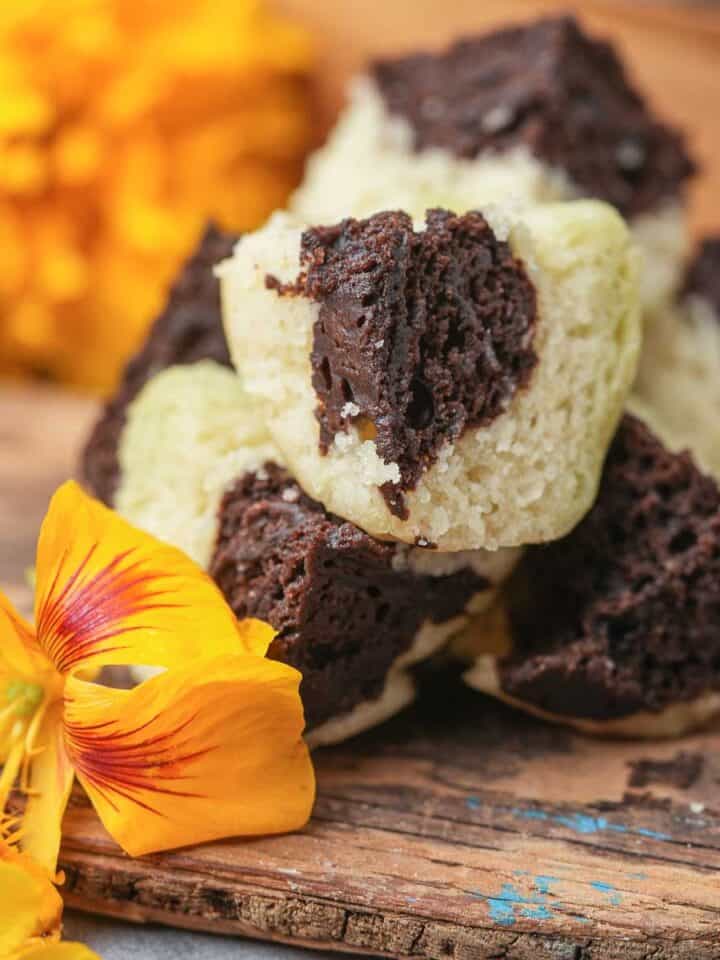
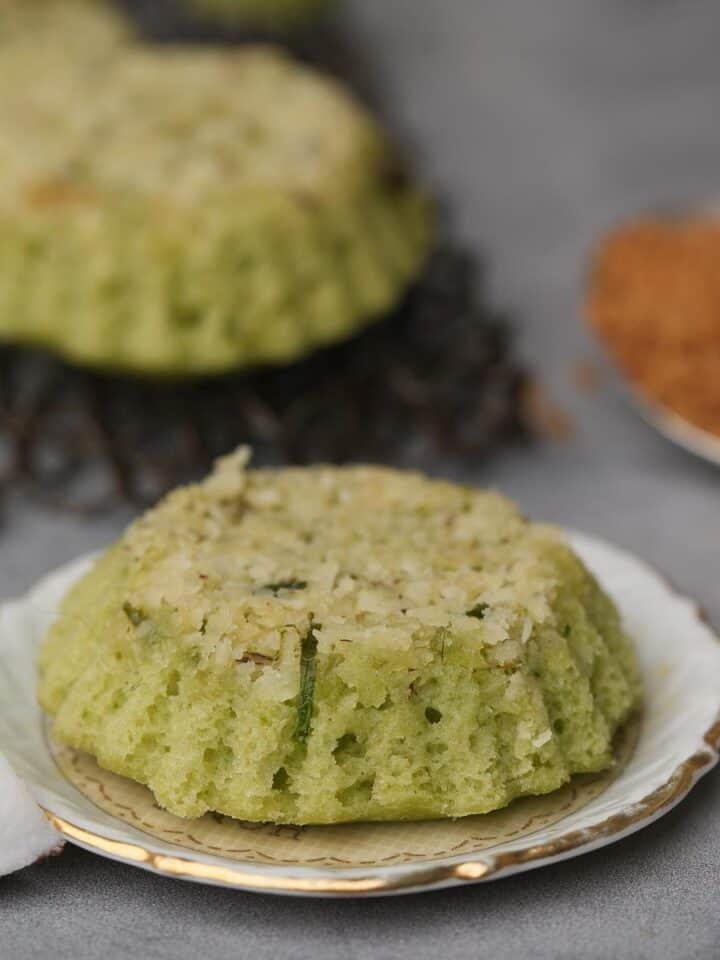
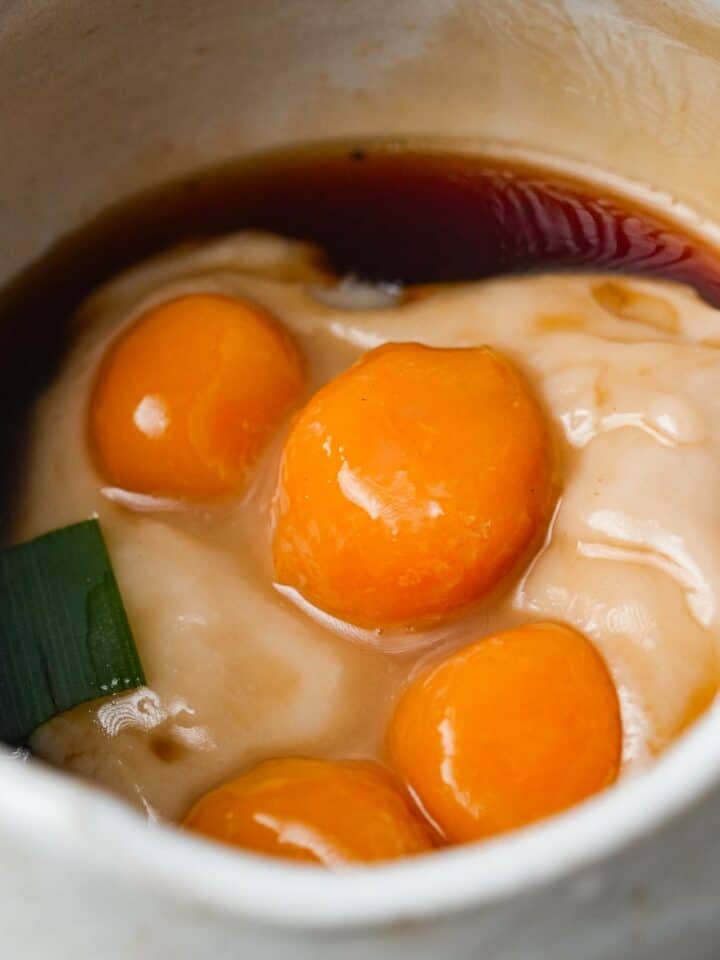
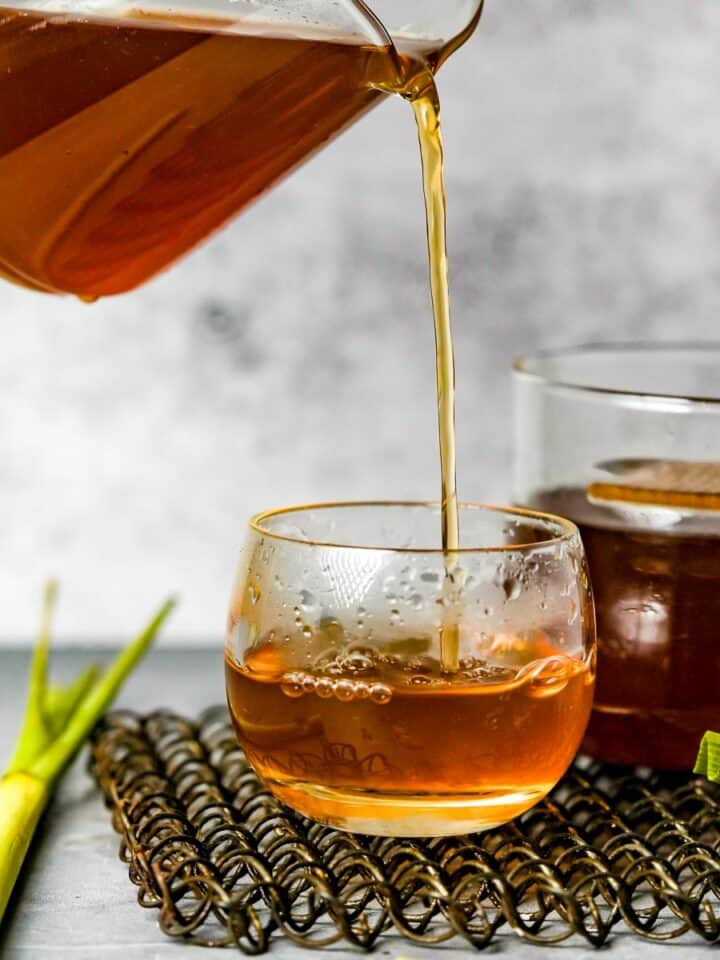



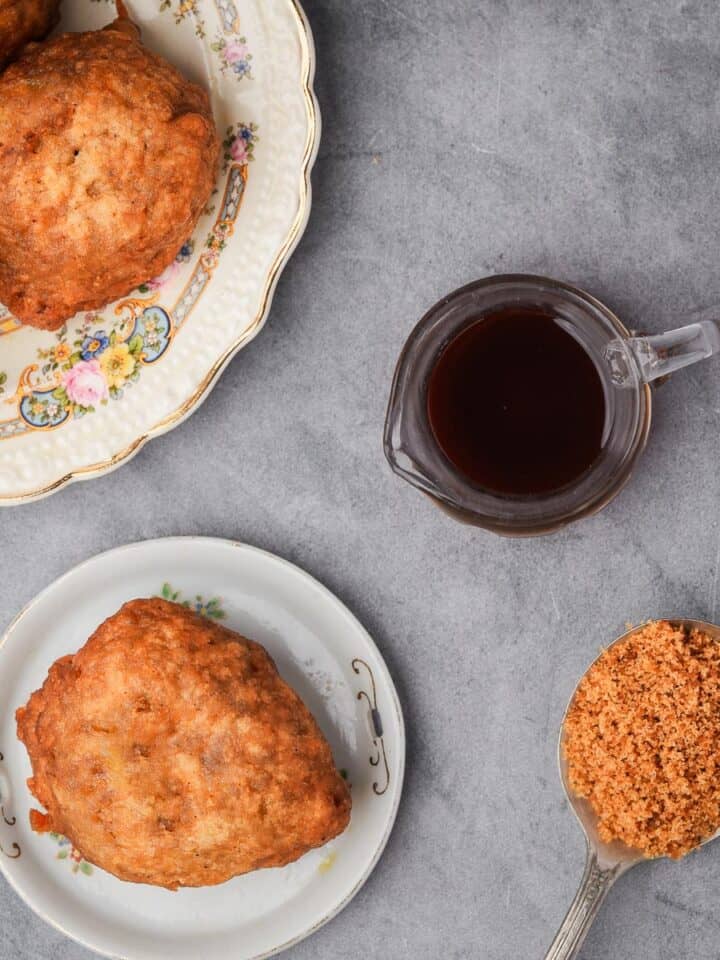
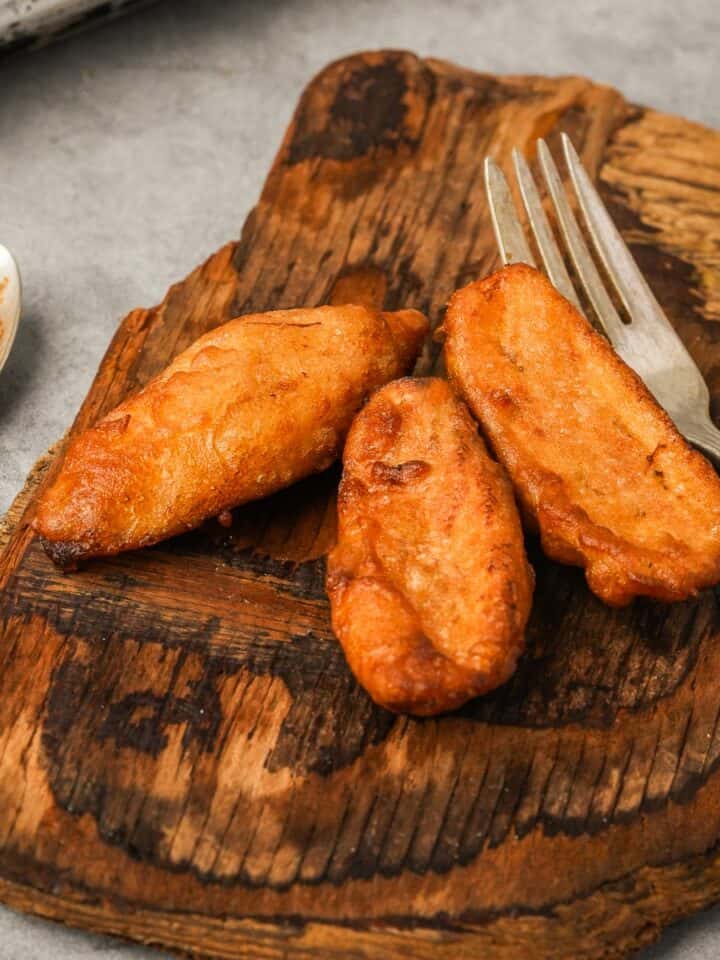
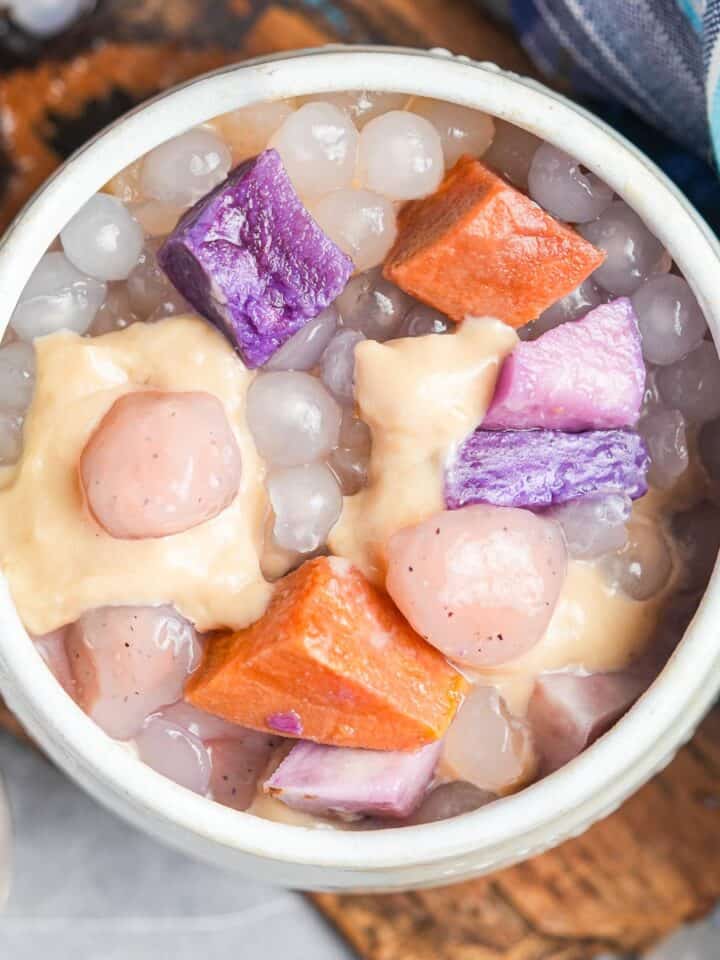
Magda says
Love Klepon, although I have a recipe, I'm going to try yours next time. It sounds really good!
Also going to try some of your other recipes. I am Dutch Indonesian and learned how to cook many dishes from my Mom, however, there are many versions of the dishes, all depending what Indonesian Island you are from.
Thanks so much!
Adam Sobel says
Psyched to hear how you like this version!